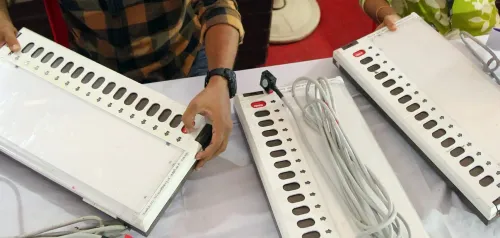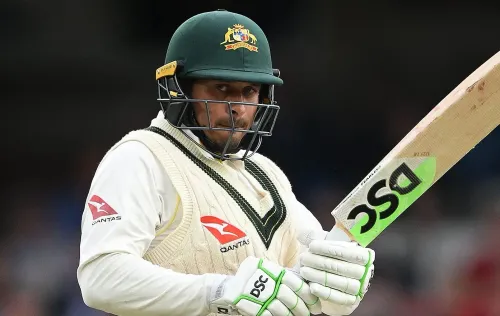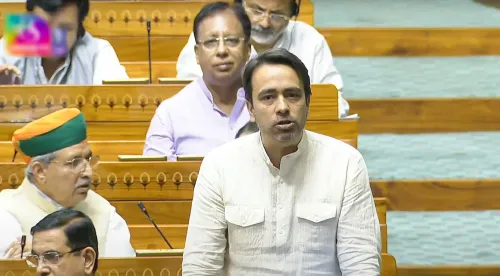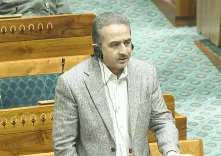What is Causing the Krishna and Godavari Rivers to Flood?
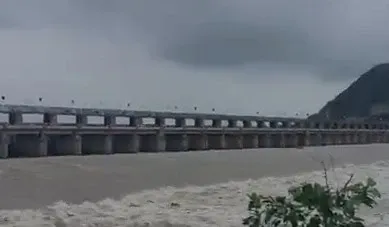
Synopsis
Key Takeaways
- Krishna and Godavari rivers in flood.
- First flood warning issued at Prakasam Barrage.
- Heavy rains causing significant inflows.
- Authorities taking measures to manage water levels.
- Residents urged to stay alert and safe.
Vijayawada, Aug 19 (NationPress) The Krishna and Godavari rivers are currently experiencing significant flooding, leading to the issuance of the first flood alert at the Prakasam Barrage on Tuesday.
The Andhra Pradesh State Disaster Management Authority (APSDMA) has warned residents living downstream of the barrage.
Heavy rain upstream has caused the water level at the barrage on the Krishna River to rise dramatically.
Officials report an inflow of 4.01 lakh cusecs at the barrage, which is being discharged downstream. By Tuesday evening, this inflow is anticipated to reach 6 lakh cusecs.
Due to substantial water inflows from upstream reservoirs, attributed to intense rainfall in catchment areas, authorities have opened 69 of the 70 crest gates to manage excess water flow into the sea.
All major dams along both the Krishna and Godavari rivers are receiving considerable inflows. The Srisailam dam on the Krishna River in Andhra Pradesh is currently seeing an inflow of 3.42 lakh cusecs, with an outflow of 4.04 lakh cusecs downstream. Meanwhile, the Nagarjuna Sagar dam in Telangana has inflows and outflows of 3.71 lakh cusecs and 3.98 lakh cusecs, respectively.
The water level in the Godavari is also rising sharply in Bhadrachalam, Telangana, currently at 36.6 feet.
At the Dowleswaram Barrage near Rajahmundry, Andhra Pradesh, inflows are recorded at 8.23 lakh cusecs.
APSDMA Managing Director Prakhar Jain has urged residents near the Krishna, Godavari, and Tungabhadra rivers to stay vigilant and avoid crossing swollen streams and canals.
In related news, the Indian Meteorological Department (IMD) has predicted extremely heavy rains over coastal Andhra Pradesh on Tuesday.
A low-pressure area over the west central and adjacent northwest Bay of Bengal, off the coasts of northern Andhra Pradesh and southern Odisha, has intensified into a well-marked low-pressure area, crossing the Odisha coast at Gopalapuram on Tuesday.
As a result of this low-pressure system, isolated regions in the northern coastal Andhra have experienced heavy rainfall, with squally winds reaching speeds of 35-45 km/h expected in the area.
APSDMA has advised fishermen not to venture into the sea and has called on the public to remain vigilant.
Meanwhile, G. Vijayalaxmi, the Special Chief Secretary for Disaster Management, held a teleconference with district Collectors in light of the floods affecting the Krishna and Godavari rivers.
She reviewed the situation with district Collectors from 13 districts along both rivers, instructing them to implement measures to avert any potential disasters.
The Collectors have been directed to notify residents in low-lying areas and, if necessary, relocate them to relief camps.
The Special Chief Secretary has also ordered that teams from the National Disaster Response Force (NDRF) and Special Disaster Response Force (SDRF) be kept on standby.
Officials were also instructed to ensure adequate supplies of essential goods, medications, and sanitation materials.


